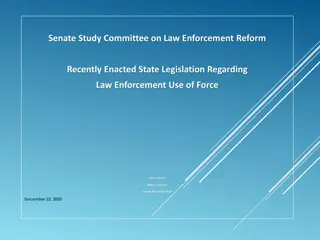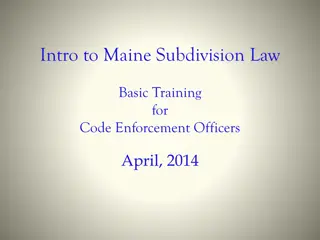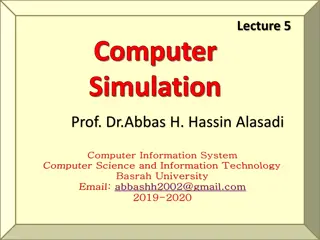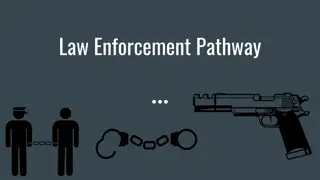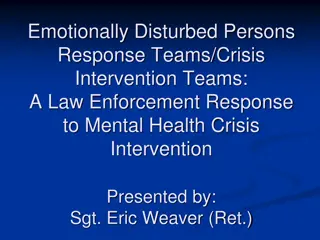Duane Wolf Attack Simulation Study: Insights for Law Enforcement Officers
Duane Wolf conducted an attack simulation study to test the speed at which an un-handcuffed suspect sitting on a curb can launch an attack on officers. The study involved volunteers in different leg positions to mimic real-life scenarios. Findings emphasized the importance of officers staying alert for pre-attack cues and maintaining a reactionary gap to effectively respond to potential threats.
Download Presentation

Please find below an Image/Link to download the presentation.
The content on the website is provided AS IS for your information and personal use only. It may not be sold, licensed, or shared on other websites without obtaining consent from the author. Download presentation by click this link. If you encounter any issues during the download, it is possible that the publisher has removed the file from their server.
E N D
Presentation Transcript
Duane Wolf Attack Simulation Study Tests the speed an un-handcuffed suspect sitting on a six-inch curb can launch an attack and cover a distance of five feet. Tested from 3 different positions commonly used by officers. Duane Wolf: LE Instructor, Alexandria (MN) Technical and Community College . Wolfe can be reached at: DuaneW@alextech.edu
Attack Simulation Design 42 LE program volunteers, age 18-25, 2 females Suspects sitting on six-inch curb with legs configured to delay them in launching a physical attack. Legs straight out Legs straight out with ankles crossed Legs crossed "yoga-style" with heels tucked back against the curb Given a sound cue the suspect was told to move and slap a time on a table five feet away.
Duane Wolf Attack Simulation In this study: Processing time is 0 suspects know the meaning of the sound, which means time here is zero. Situational awareness time is 0 suspects know how to interpret and project the meaning of the sound, so time is 0 sec once again. Response selection is 0 there is only one response, so time is 0 sec here too. The suspect only has to perceive the sound and move. Perception for sound takes 0.19 sec. Perception Processing Situational Awareness Response Selection Movement Time Device Time
Duane Wolf Attack Simulation Time in seconds Position Average Fastest Slowest 1.34 1.14 1.97 1.35 1.02 2.16 1.30 0.90 1.77 0.19 sec. must be subtracted for sound processing. Only movement time should be considered in a real life encounter..
Lessons Learned "The test subjects always placed one or both hands down on the curb as a means of using their upper body to push forward. So stay alert for placement of the hands flat on the curb close to the hips as a possible pre-attack cue." Duane Wolf: LE Instructor, Alexandria (MN) Technical and Community College
Lessons Learned "If the officer is distracted when an attack is launched, a suspect who starts from any of these positions will very likely be able to reach his target before the officer can effectively react to stop him or to escape." Duane Wolf: LE Instructor, Alexandria (MN) Technical and Community College
Lessons Learned "What matters is not what seating position is used but the distance between you and the suspect. Your reactionary gap needs to be figured from where his feet are, not from his upper body." Wolfe recommends keeping a space of five to seven feet or more from a seated subject's feet, and standing at an angle to him rather than straight-on to further add time to his effort to reach you. "If you have to approach a seated suspect, try to do so from the rear." Duane Wolf: LE Instructor, Alexandria (MN) Technical and Community College
Lessons Learned "The times established by the study are averages, some people are faster, some are slower. On the street, you never know where your suspect will be on the scale and you may not know whether your reaction time will be better than the average officer's--or worse." Duane Wolf: LE Instructor, Alexandria (MN) Technical and Community College
Biggest Surprise Wolf says the "biggest surprise," however, was the manner in which the test subjects moved. "I assumed everyone would rise to their feet, at least in a crouch, then go for the timer pad, but many just "threw their upper body forward, tucked their feet in, and lunged, with one or both knees staying on the ground or close to it. Those who stayed on both knees generally had the fastest times. Especially with a suspect who's knowledgeable in mixed martial arts, coming in low like that, taking out an officer's legs between knee and groin level, is very difficult to defend against." Duane Wolf: LE Instructor, Alexandria (MN) Technical and Community College





